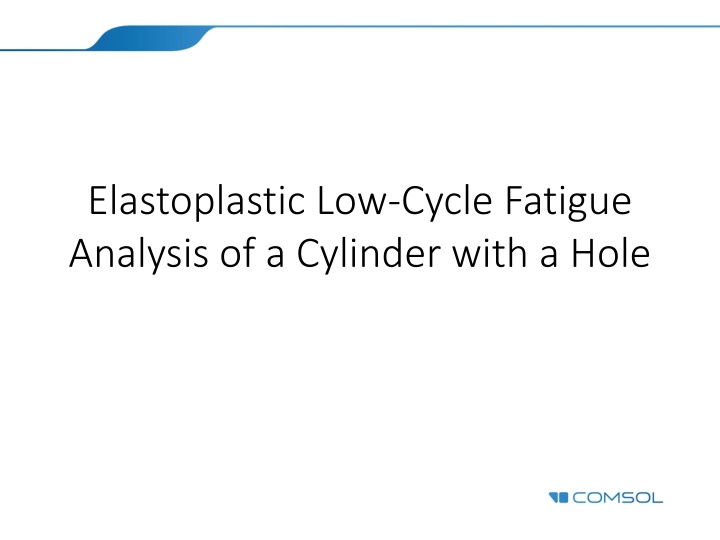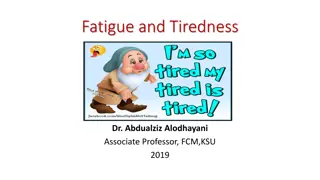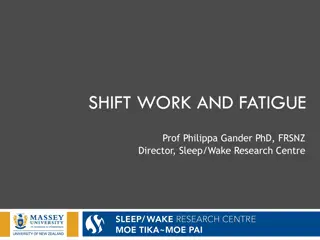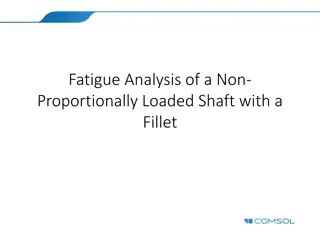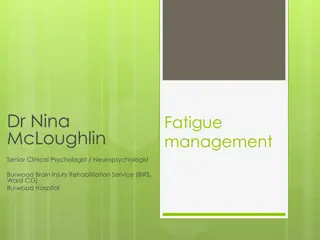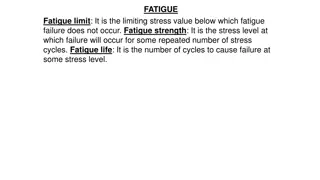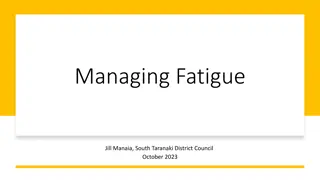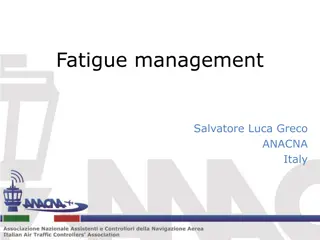Elastoplastic Low-Cycle Fatigue Analysis of Cylinder with Hole
Structural component subjected to cyclic loading experiences localized plasticity, requiring full elastoplastic simulation. Stable load cycle achieved after simulating two cycles, with fatigue prediction based on Smith-Watson-Topper model for low-cycle fatigue evaluation.
Download Presentation

Please find below an Image/Link to download the presentation.
The content on the website is provided AS IS for your information and personal use only. It may not be sold, licensed, or shared on other websites without obtaining consent from the author.If you encounter any issues during the download, it is possible that the publisher has removed the file from their server.
You are allowed to download the files provided on this website for personal or commercial use, subject to the condition that they are used lawfully. All files are the property of their respective owners.
The content on the website is provided AS IS for your information and personal use only. It may not be sold, licensed, or shared on other websites without obtaining consent from the author.
E N D
Presentation Transcript
Elastoplastic Low-Cycle Fatigue Analysis of a Cylinder with a Hole
Model Background A structural component is subjected to multi-axial cyclic loading. The stresses are above yield limit and localized plasticity occurs. A full elastoplastic simulation of the load cycle is made. The structural behavior is simulated using a plasticity model from the Nonlinear Structural Materials Module. Fatigue is based on the stress-based Smith- Watson-Topper model.
Stable Load Cycle A full elastoplastic analysis is time consuming. Two load cycles are simulated in order to obtain a stable load cycle. The structural response of these two differs. For each consecutive load cycle the stress strain response is the same. The second load cycle is therefore said to be stable and is used in fatigue evaluation.
Fatigue Prediction The strain-based models are suitable for low- cycle fatigue. Fatigue is evaluated with the Smith-Watson- Topper model.
